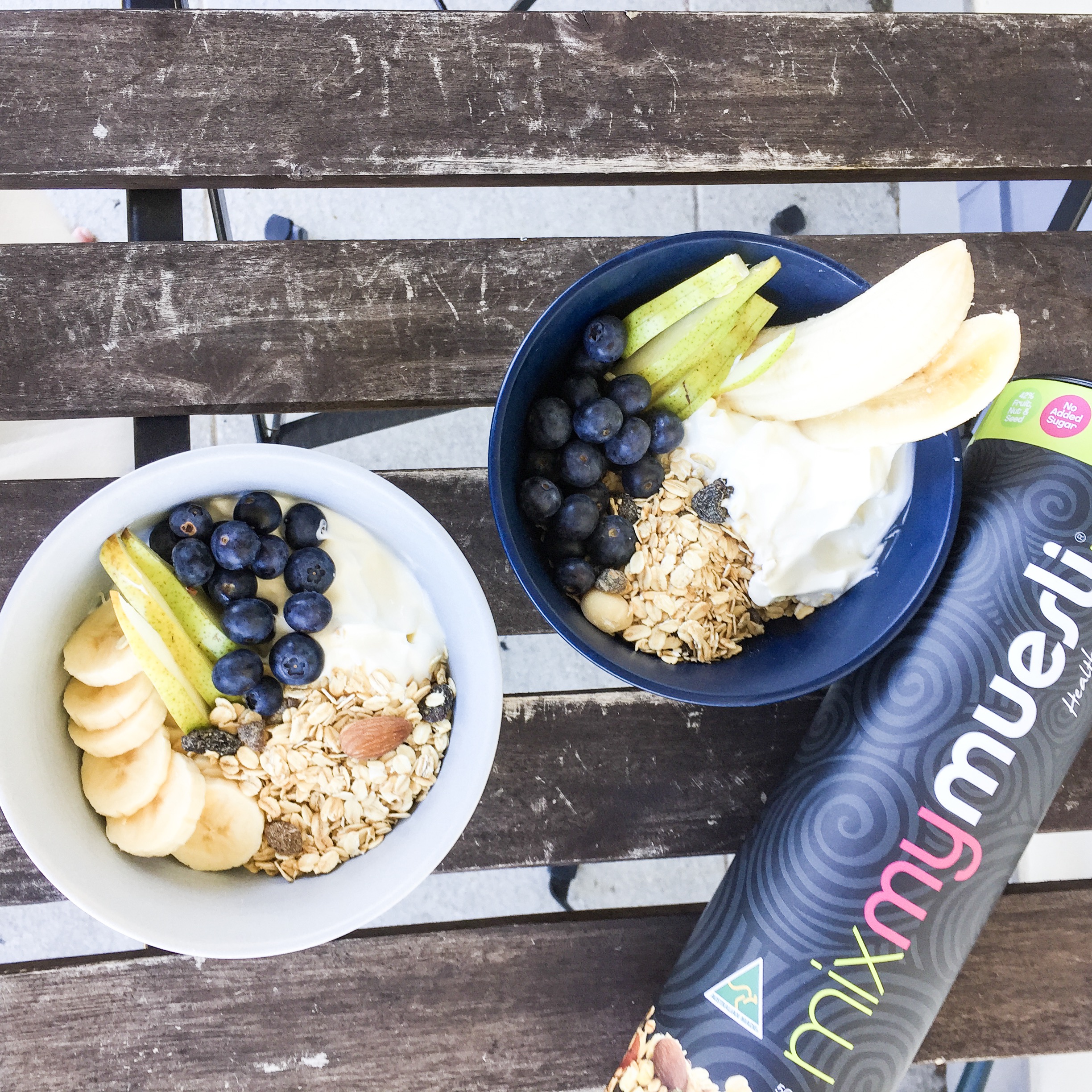There are so many different mueslis on the market, with most of them claiming to be healthy. In some instances though, muesli can be a much less healthy choice. So, what to look for in a muesli? (And keep reading to the bottom to find out how to win some of my favourites!)

Here are six key steps for what to look for in a muesli
1. Ignore front of pack claims
Many mueslis place health slogans or talk about the trendy ingredients they contain on the front of the pack. This marketing tool is used to lull you into a false sense of security, and often hides the other things that are in the muesli you may want to be avoiding. Couple this with ‘healthy looking’ packaging and it can become very easy to choose something that isn’t so healthy. Instead, flip the packet over and read the ingredients list, and nutrition information panel.
2. Sugar content
When choosing a healthy muesli, checking out the sugar content is paramount. Refined sugar can hide in muesli in all sorts of ways, be it added to toasted muesli as juice to help make it crispy, in dried fruit, as a ‘healthy’ alternative, such as rice bran syrup, or even simply just added in. Choose a muesli that doesn’t contain added sugars, and that has sugar content of less than 10g of sugar per 100g.
3. Fibre content
Fibre is important for a healthy gut, and for helping to keep us full (among other things!). Given the need for approximately 30g of fibre per day, a fibre rich breakfast goes a long way towards this. Choose a muesli with at least 7.5g of fibre per 100g, or alternatively, one that contains at least 3g of fibre per serve as a high fibre choice, and more than 6g per serve for a very high fibre choice.


4. Which fats
Where does the fat come from in your muesli? Is it from beautiful nuts and seeds that make up the nutritious muesli, or instead is it from it being sprayed with oil pre-toasting? What type of oil is it? Aiming for any fat to be coming from healthy sources, such as nuts and seeds will help keep you on track.
5. Protein content
Many mueslis are low in protein, with reliance on addition of yoghurt or milk for the protein. Particularly for vegetarians and vegans, I like to recommend a muesli that is a good source of protein, as it can be harder to meet these requirements. Look for nuts, seeds and protein rich grains.
6. What has been added…
Read through the ingredients list and see if there has been anything else added. Is there artificial preservatives in the fruit? Any fillers? Usually, the shorter the ingredients list, and the more familiar whole foods listed, the less additions you will find.


What’s my pick of muesli?
I love the range from Mix My Muesli; the range doesn’t contain added sugar in any of their mueslis, and averages less than 1tsp of sugar per serve. The fruits are premium dried fruits that don’t contain sulphites, a common preservative used in dried fruits (that many people don’t tolerate well), and – most importantly – they are SUPER tasty. My personal favourites are the Runners Mix and the Gluten Free Deluxe. Want to find out your favourite? Head over to insta to enter the competition we are running, and you could be the lucky recipient of the ENTIRE Mix My Muesli Range – meaning you won’t have to think about what to look for in a muesli, as you’ll know what you’ve received is ace! Such a score!


By Chloe McLeod, Online Dietitian based in Sydney

